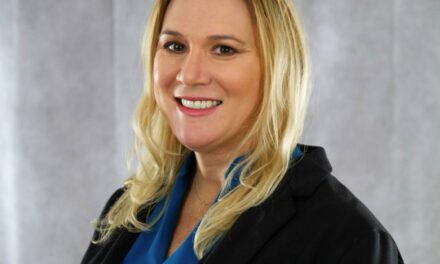Montana, South Dakota and Nebraska are Best States for Doctors
With National Doctors’ Day coming up on March 30 and a family physician’s salary ranging from around $130,000 to $310,000, depending on the state, the personal-finance website WalletHub today released its report on 2024’s Best & Worst States for Doctors to help pinpoint where doctors can find the most financial success and the best quality employment.
To identify the best states for doctors (and for patients who want the best care), WalletHub compared the 50 states and the District of Columbia across 19 key metrics. The data set ranges from the average annual wage of physicians to the number of hospitals per capita to the quality of the public hospital system.
Practicing in California (1=Best, 25=Avg.):
Overall Rank: 33rd
- 46th – Avg. Annual Wage of Physicians (Adjusted for Cost of Living)
- 35th – Avg. Monthly Starting Salary of Physicians (Adjusted for Cost of Living)
- 43rd – Hospitals per Capita
- 22nd – Insured Population Rate
- 43rd – Projected % of Population Aged 65 & Older by 2030
- 7th – Projected Physicians per Capita by 2030
- 25th – Punitiveness of State Medical Board
- 9th – Malpractice Award Payout Amount per Capita
- 10th – Annual Malpractice Liability Insurance Rate

Casandra Happe
“Living in one of the best states for doctors can make a big difference for your medical career,” said Cassandra Happe, WalletHub analyst. “In addition to making more money, you will also be able to work in higher-quality hospital environments, be less likely to burn out, and pay less for malpractice insurance. For everyone else, living in one of the best states for doctors can lead to quality healthcare.”
According to Happe, “Montana, South Dakota and Nebraska are the best states for doctors, and they share a lot of characteristics. These states have a high number of hospitals for every 100,000 residents, high wages for doctors, and nationally accredited health departments. The states have their individual strengths, too. For example, Montana has an especially high percentage of medical residents trained in the state who stay there, while South Dakota and Nebraska have very low malpractice insurance premiums.”
Expert Commentary
How does state and local policy influence the lives of doctors and other medical professionals?
“There are a multitude of policies that affect doctors and medical professionals. Malpractice law is, of course, one. A significant policy, which could be available at the state and local levels, is financial incentives such as paying part of loans to economic development incentives. The latter is especially available in small communities seeking a physician. Further, the financing of health care for the poor, amount of payment, and coverage (Medicaid expansion). For nurse practitioners, there are scope of practice laws, which are expansive in some states and limited in others.”
— Edward J. Miller – Professor; Co-Director of the Center for the Small City, University of Wisconsin-Stevens Point
“A key factor influencing the lives of medical professionals is the health of the local community. A positive overall culture and environment supporting health includes collaboration with public health agencies, social service organizations, and local communities to focus on the broad range of factors influencing health. These include promoting health equity, attention to specific needs of rural communities, addressing food security and housing needs, and providing ample public education about health. An environment where there is a collaborative culture between healthcare, academic institutions, government, and social service organizations may provide opportunities to practice health care as well as meet the health and social needs of patients, a rewarding professional environment.”
— Jan K. Carney, MD, MPH, MACP – Associate Dean for Public Health & Health Policy; Professor; Chief, Division of Public Health, University of Vermont
What tips can you offer current medical students about what specialty to pursue and where to practice?
“Current medical students should consider what specialty is most intellectually engaging to them, what long-term job prospects based on projected workforce needs look like, and what potential loan repayment and other incentive programs exist for early-career physicians.”
— Todd M. Olszewski, Ph.D. – Associate Professor; Department Chair, Department of Health Sciences, Providence College
“Practice in a state that has lower-cost malpractice insurance (especially if not working for a large organization). If joining a larger group, such as a hospital chain, see what the satisfaction rates are for those who are already practicing there. This is very important for the quality of professional life. Certainly, check out the community. Lastly, while we definitely need primary care doctors, specialists do make more money. If money is important, then become a GI doctor rather than an internist.”
— Edward J. Miller – Professor; Co-Director of the Center for the Small City, University of Wisconsin-Stevens Point
What are the biggest issues facing doctors today?
“The medical profession faces several critical issues. Physician burnout is very real and can be attributed to a variety of causes, including the rise of medical misinformation during the COVID-19 pandemic and the increase in administrative burdens associated with patient documentation and prior authorization. Workforce shortages continue to place additional strain on overburdened physicians and their colleagues while hospital mergers and acquisitions continue to complicate efforts to promote health equity among vulnerable patient populations.”
— Todd M. Olszewski, Ph.D. – Associate Professor; Department Chair, Department of Health Sciences, Providence College
“The organization in which a physician works. ‘Paperwork’ requirements, quantity of work expected (such as the number of patients seen per day), and amount of calls required.”
— Edward J. Miller – Professor; Co-Director of the Center for the Small City, University of Wisconsin-Stevens Point
For the full report, please visit:
https://wallethub.com/edu/best-and-worst-states-for-doctors/11376
Image Sources
- Cassandra Happe: WalletHub
- Doctor: Pixabay







